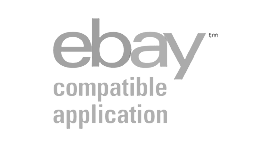Content marketing is more than just a buzzword. It’s a strategy that all types of retailers can (and should) undertake. In today’s world dominated by demanding buyers and fierce competition, content marketing is one strategy you can use to increase your sales.
In this article, we’ll cover what content marketing is, how it can help drive sales, and some content ideas.
What Is Content Marketing?
Do you keep hearing the words “content marketing”? Maybe you’ve never bothered to look into it, or you have, but you didn’t really get it.
I’ll try to sum it up for you here.
The exact definition, as provided by the Content Marketing Institute, says that content marketing is a strategic marketing approach focused on creating and distributing valuable, relevant, and consistent content to attract and retain a clearly-defined audience – and, ultimately, to drive profitable customer actions.
That’s a lot to take in
In more simple terms, content marketing is the process of creating relevant and valuable content that allows you to communicate with your potential customers on an ongoing basis.
It differs from traditional marketing in that the content does not need to be focused on just selling your product or services. Instead, you provide information that your buyer could need at any point during their buyer’s journey.
Content marketing is not saying that no content can advertise or sell your products. But, it is saying that you should also focus on content that provides valuable insight to your customer, which can eventually help them purchase later on.
For example, a tv ad might show a brand new lawn mower that you offer with its price and your store’s location and hours. Traditional marketing would have blast this ad multiple times a day across all the local tv stations.
A content marketer, on the other hand, would instead develop a blog that has articles with titles such as “How to Clean Your Lawn Mower,” “Comparison Between Riding, Push, and Zero-Turn Mowers,” and “Best Lawn Mower Attachments for Farmers.”
In these articles, the brand wouldn’t focus on their own product and where a customer can buy it. The post would just focus on providing valuable information to someone who wants to or already owns a mower.
Just to clarify, content marketing is way more than just writing blog posts (we’ll get to that later). We could write a whole series, or dedicate a whole another site to just content marketing. Lucikly for you, someone already has – Content Marketing Institute.
How a Content Marketing Strategy Can Drive eCommerce Sales
How does content marketing drive sales exactly then if you aren’t even talking about your own products?
Content marketing demonstrates that when we provide customers with consistent and valuable information, they then rewards us with their business and loyalty – ultimately, sales. Here’s how:
Attracts More People
Traditional marketing focuses mostly on capturing customers who are ready to buy. That’s why you blast people with messages about your product and where to buy it.
Content marketing strategically has you provide information to customers, no matter where they are in the buyer’s journey. It doesn’t matter if they are still identifying their need or shopping around for options. Your content should help them research and solve their problem.
In this way, you’ll appeal to a broader audience, not just those ready to buy. When they are ready to choose a product, they’ll choose you because of all the valuable information you have provided them along the way.
Helps Customers Convert On Your Site
As we said, content marketing is not just about having a blog and publishing weekly articles. Content marketing encompasses any type of information you provide customers. This includes all your website pages and product information.
A content marketing strategist considers every page on your storefront important- from your product catalog, FAQ and return policy to your blog. They all must work together to help customers trust that your product is what they need.
The most important of these pages are your product pages. Rich, detailed product information ensures that your products are found on google searches or site’s navigation and convert the customer to buy. You have to have a strategy for management of your product information.
At nChannel, we call this unique need of eCommerce sellers product content strategy. It’s vital in helping make sure that customers find and buy your products across all of your eCommerce channels.
You can bet that better product and site content can help drive your sales. Consider this statistic:
30% of US online adults cite that they would consider buying from an online retailer they had never previously purchased from, if the retailer offered detailed product information.
Encourages Loyalty
Content marketing is more than just about getting new sales. It’s also about encouraging repeat sales, or customer loyalty.
A sound content marketing strategy includes talking to customers on an ongoing basis. This means communication with a customer before and after a purchase. You’ll be providing a complete customer experience.
When customers have a good experience, they’ll come back for more.
Next time when they go to purchase, they’ll come to your site first. They’ll be more apt to try a new product from you. They’ll encourage their friends to try you out.
This is the definition of customer loyalty, and it’ll earn you repeat sales.
eCommerce Content Marketing Strategy Ideas
To get you started, here are some creative ideas to get you brainstorming about different types of content you can provide. What works best for you depends on your eCommerce business and the type of products you sell.
Site Pages
Put some extra love into your already existing site pages like your FAQ, return policy, and company story. These pages are important in helping customers get to know and love your brand. Don’t be afraid to show some personality.
Product Pages
Products on your site need to be easy to find and provide rich, detailed information. Whether you sell on your own site, or marketplaces, you’re going to need to a product information management (pim) strategy to ensure consistent product information across all your channels.
To accomplish this, check out what a PIM tool can help you with.
Blogging
Create a blog like Multichannel Insights, which is what you’re reading now. A blog is a great way to house all types of helpful articles on topics that are relevant to customers.
Example: Home Depot’s Blog
Video
Create how-to videos that customers can easily consume while browsing the internet. Videos can be inspiration on how to use your products, or something related to your products. Provide value for your customers.
Example: Fabletic’s Youtube Channel
Social Media
If you’re not already using some social media platform, you should consider to do so. You don’t have to be on every platform. You just need to be wherever your customers are.
New advancements in Facebook, Pinterest, and Twitter now make it possible for customers to buy products straight from the platform.
Example: Shopify provides a good list of examples here.
Microsite
A microsite is more than just a blog. Instead, it’s a whole site dedicated to providing information to your customers. When they’re ready, then the can navigate over to your eCommerce site to make a purchase.
Example: ElfYourself.com, Office Max
Email Marketing
Email marketing can be used for more than just reminding customers that they abandoned items on your site. Use email marketing to distribute curated content like newsletters and nurture track to turn window shoppers into buyers.
Podcasts
Are you more of a talker instead of a writer? Podcasts are a great alternative for people to consumer content.
Apps
Retailers can leverage apps in many different ways. They can provide coupons, store locations, sales notifications, etc. All content that can be helpful to your customers.
Example: Nordstrom, Target, Amazon
eBooks and Whitepapers
eBooks, or whitepapers can be longer content on one topic. These can be guides, reports, or anything of the sort. They usually contain more valuable content or insights. You can even gate them meaning that you require a customer’s email in order to download them.
What To Do Next
There are many, many ways to provide relevant content for your customers. You just need to take the time to think of your customers, their problems, and what information you can provide them.
To get started on how to provide this type of experience for your customers, check out our eBook that explains everything you need to know about product content strategy. We can’t stress enough how important this is to eCommerce sellers.







Love this post! Content marketing seems to be more and more important every day.
The other more major benefit that I have found from content marketing in the eCommerce space is how it helps your search engine results. There are some major SEO factors to content marketing.
[…] provide helpful content about the use of your products or services. Learn more about how a content marketing strategy can increase sales […]
I have been exploring for a little for any high-quality articles or weblog posts on this sort of space . Exploring in Yahoo I at last stumbled upon this web site. Studying this information So i’m glad to show that I’ve an incredibly good uncanny feeling I discovered exactly what I needed. I most certainly will make sure to don?t forget this web site and give it a glance on a continuing basis.|
Hi, its good post about media print, we all understand media is a wonderful source of facts.|
Hurrah! At last I got a weblog from where I can truly obtain valuable data concerning my study and knowledge.|
Hmm it looks like your website ate my first comment (it was super long) so I guess I’ll just sum it up what I submitted and say, I’m thoroughly enjoying your blog. I too am an aspiring blog blogger but I’m still new to the whole thing. Do you have any helpful hints for rookie blog writers? I’d genuinely appreciate it.|